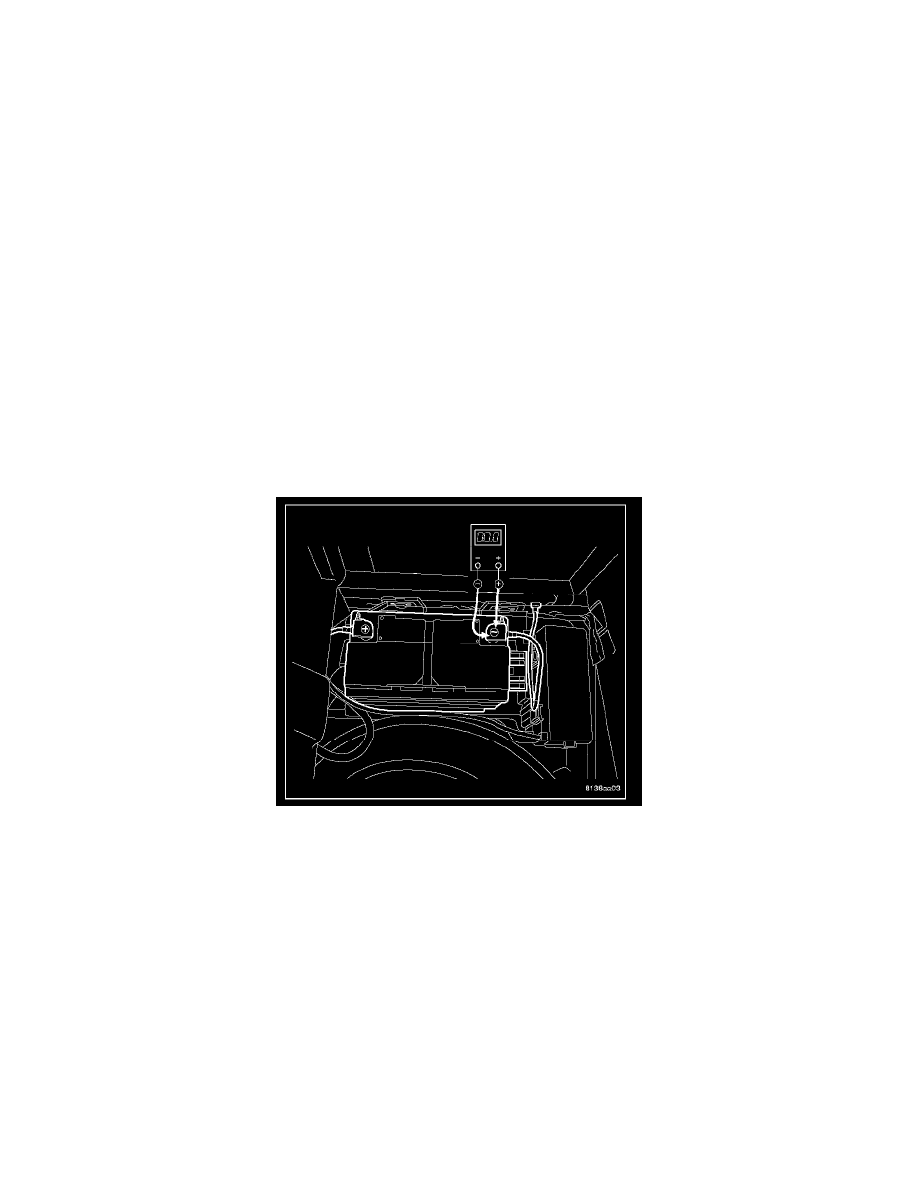Magnum SRT-8 V8-6.1L VIN 3 (2006)

Battery Cable: Testing and Inspection
BATTERY CABLES
A voltage drop test will determine if there is excessive resistance in the battery cable terminal connections or the battery cable. If excessive resistance is
found in the battery cable connections, the connection point should be disassembled, cleaned of all corrosion or foreign material, then reassembled.
Following reassembly, check the voltage drop for the battery cable connection and the battery cable again to confirm repair.
When performing the voltage drop test, it is important to remember that the voltage drop is giving an indication of the resistance between the two points
at which the voltmeter probes are attached. EXAMPLE: When testing the resistance of the battery positive cable, touch the voltmeter leads to the battery
positive cable terminal clamp and to the battery positive cable eyelet terminal at the starter solenoid B(+) terminal stud. If you probe the battery positive
terminal post and the battery positive cable eyelet terminal at the starter solenoid B(+) terminal stud, you are reading the combined voltage drop in the
battery positive cable terminal clamp-to-terminal post connection and the battery positive cable.
VOLTAGE DROP TEST
The following operation will require a voltmeter accurate to 1/10 (0.10) volt. Before performing this test, be certain that the following procedures are
accomplished:
-
The battery is fully-charged.
-
The battery has successfully passed a load test.
-
Fully engage the parking brake.
-
If the vehicle is equipped with an automatic transmission, place the gearshift selector lever in the Park position. If the vehicle is equipped with a
manual transmission, place the gearshift selector lever in the Neutral position and block the clutch pedal in the fully depressed position.
-
Verify that all lamps and accessories are turned off.
-
To prevent the engine from starting, remove the Automatic Shut Down (ASD) relay. The ASD relay is located in the Power Distribution Center
(PDC), in the engine compartment. See the fuse and relay layout label affixed to the underside of the PDC cover for ASD relay identification and
location.
1. Remove the spare tire cover to gain access to the battery. Connect the positive lead of the voltmeter to the battery negative terminal post. Connect
the negative lead of the voltmeter to the battery negative cable terminal clamp. Rotate and hold the ignition switch in the Start position. Observe
the voltmeter. If voltage is detected, correct the poor connection between the battery negative cable terminal clamp and the battery negative
terminal post.
